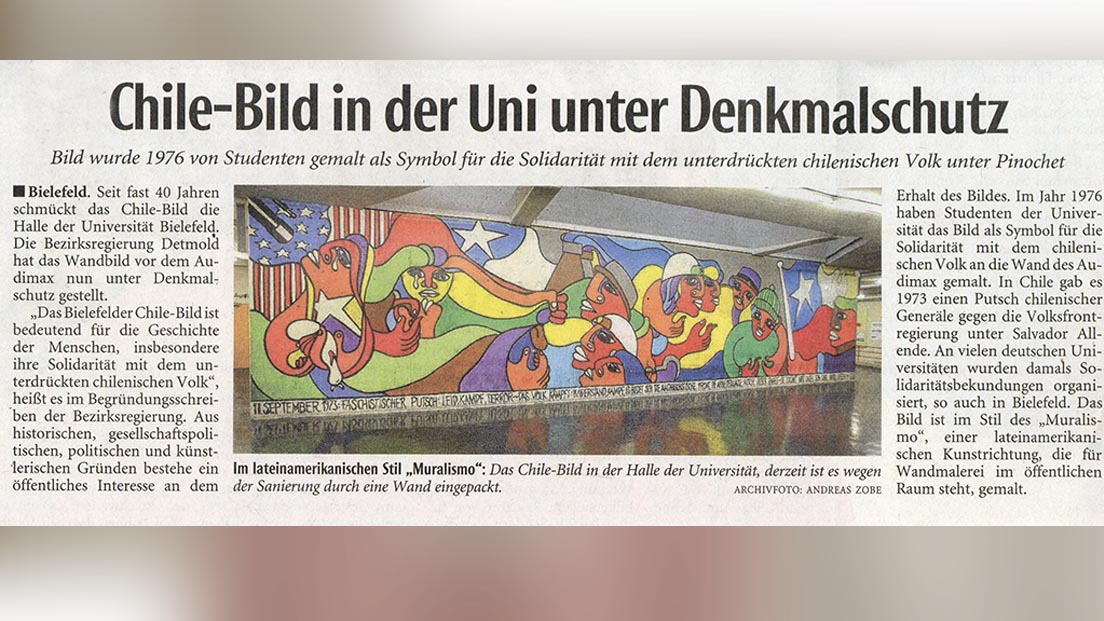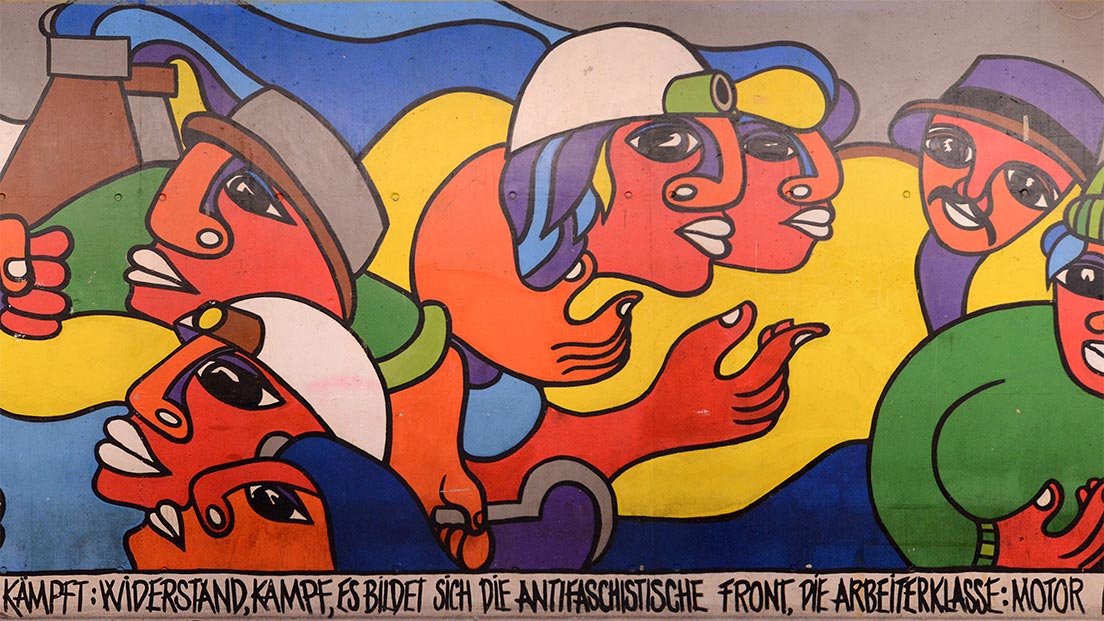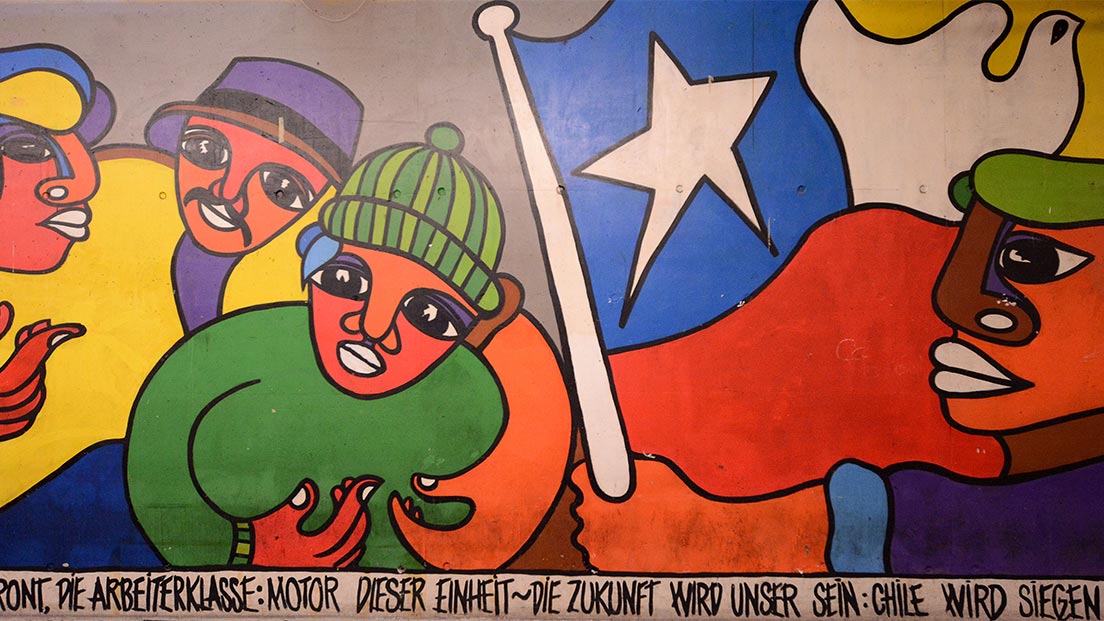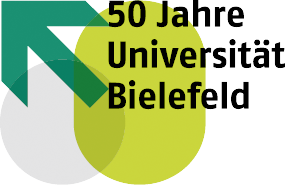After Augusto Pinochet’s bloody military coup against the democratically elected Popular Unity coalition government of Salvador Allende on 11 September 1973, debates, concerts and other expressions of solidarity took place at the University under the slogan “Solidarity with the Chilean people”. The front wall of the Audimax in the central hall of the newly completed University main building, which was intended as an information board, was transformed within 14 hours into a monumental image. The AStA (student union) had planned the covert initiative. The message written across the mural read (in German): “September 11, 1973: Fascist coup: suffering, struggle, terror ~The people are fighting: resistance, struggle, The anti-fascist front is forming, The working class: engine of this unity ~ The future will be ours: Chile will win!”.
–
Source: Universitätsarchiv Bielefeld
Chile mural becomes a symbol of conflict culture
Most people praised the introduction of colour in the otherwise bleak hall. However, the university management criticised the unlawful creation of the mural and thus triggered a controversial discussion in the university’s committees. The solution of this conflict is to this day also an example of the constructive communication culture of the various university groups and the political culture at the newly founded “Reform University”. The Senate of the University unanimously expressed the view that the image should remain and that “the tacit toleration of fascism has no place at Bielefeld University”.
A few days after its creation, attempts were made to paint over the mural with black oil paint, but since then it has adorned the hall undisturbed until it regained public awareness through a film documentary and a celebration on the occasion of its 35th anniversary. The Chilean artist Boris Eichin, who was involved at the time, was also present at this event.

–
Source: Neue Westfälische
A unique artwork of particular significance
After the university management and the construction and property company BLB-NRW decided to preserve the mural when the main university building was about to be modernised, “tip-offs from the public” prompted the authority for the protection of monuments to consider a preservation order for the mural. The Bielefeld Chile painting is the only mural on this theme in Germany that is still located in its place of origin, according to the district government’s current knowledge. In short, the mural’s registration as a listed monument states that there is a public interest in the preservation of the artwork, as it is important for the history of humanity and should be protected on the grounds of scientific, in particular historical, as well as artistic significance.





